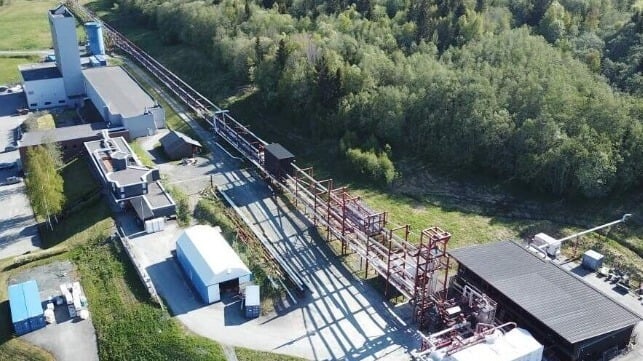Oil & Gas Technology Contributes to Carbon Capture

[By Silje Grytli Tveten]
It now seems that crucial research, conducted by SINTEF and targeted at the oil and gas sector, can also be applied in the battle to mitigate climate change.
The simulation model called LedaFlow has made it possible for us to understand how we can transport both oil and gas along the same pipeline. This multiphase flow technology has helped the Norwegian oil and gas sector save billions, and the model is now about to be further developed so that we can investigate how CO2 behaves in similar pipelines.
Technologies involving the capture and storage of CO2 (abbreviated to CCS) are crucial to the reduction of greenhouse gas emissions to the atmosphere. In future, we must learn how to handle and store large volumes of CO2. We must therefore also find out the best ways of transporting the gas and injecting it into huge subsurface reservoirs.
Upscaling
Here in Norway, a great deal of effort is being put into the industrial scale application of CCS technologies in the oil and gas sector. Among other initiatives, leading sector companies have been utilizing the Northern Lights project with the aim of sequestering up to 1.5 million tonnes of CO2 in subsea reservoirs during 2024, and a total of five million tonnes by 2026.
At present, there are only very few CO2 storage projects in operation in Norway, and all are based on the injection of gas derived from a single source and using a single well. The Northern Lights project is aiming to store CO2 at a much larger scale, involving more complex operations by which gas from multiple sources will be transported and injected using a network of different wells. The CO2 will be captured from processes such as waste incineration and cement manufacture.
This innovation research project has been given the name CO2Flow.
“The project will directly apply the expertise we have accumulated in the field of flow behavior modeling at the SINTEF Multiphase Flow Laboratory at Tiller outside Trondheim. It will also utilize knowledge obtained from the oil and gas sector during the development of the LedaFlow model”, says SINTEF researcher Ivar Eskerud Smith.
The use of innovative experiments, combined with the development of new data models, will make it possible to predict CO2 flow behavior in pipelines. This in turn will enable us to achieve large-scale CCS for application in the oil and gas sector.
Preventing accidents and shutdowns
“The behavior of CO2 in pipelines may be very different from that of oil and gas mixtures, so there are many factors to take into account”, says Eskerud Smith.
Results from the data models will help to optimize pipeline design, in particular with a view to the selection of important aspects such as materials and pipe diameter. The results will also contribute towards cost-effective and safe pipeline operation – preventing unwanted occurrences such as unstable flow or low temperatures with the consequent formation of dry ice, which may block the pipelines.
For the most part, the development of the new data models will be carried out at the SINTEF Multiphase Flow Laboratory at Tiller.. Additional experiments will be conducted at NTNU’s DeFACTO underground testing facility at Gløshaugen in Trondheim. Testing, quality assurance and commercialization activities will take place at the offices of the LedaFlow model development partner Kongsberg Digital.
The opinions expressed herein are the author's and not necessarily those of The Maritime Executive.
